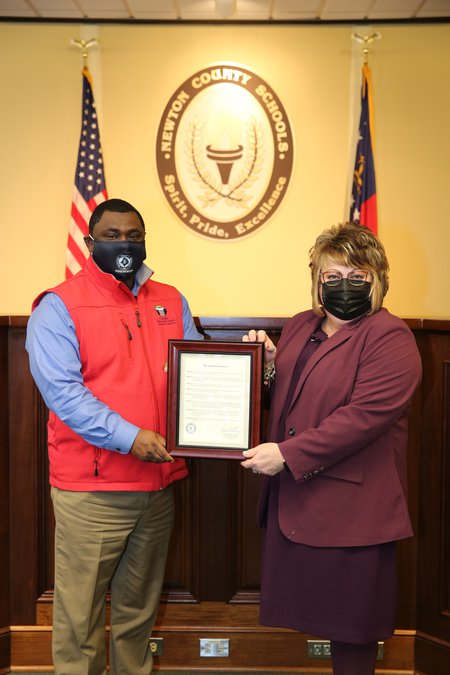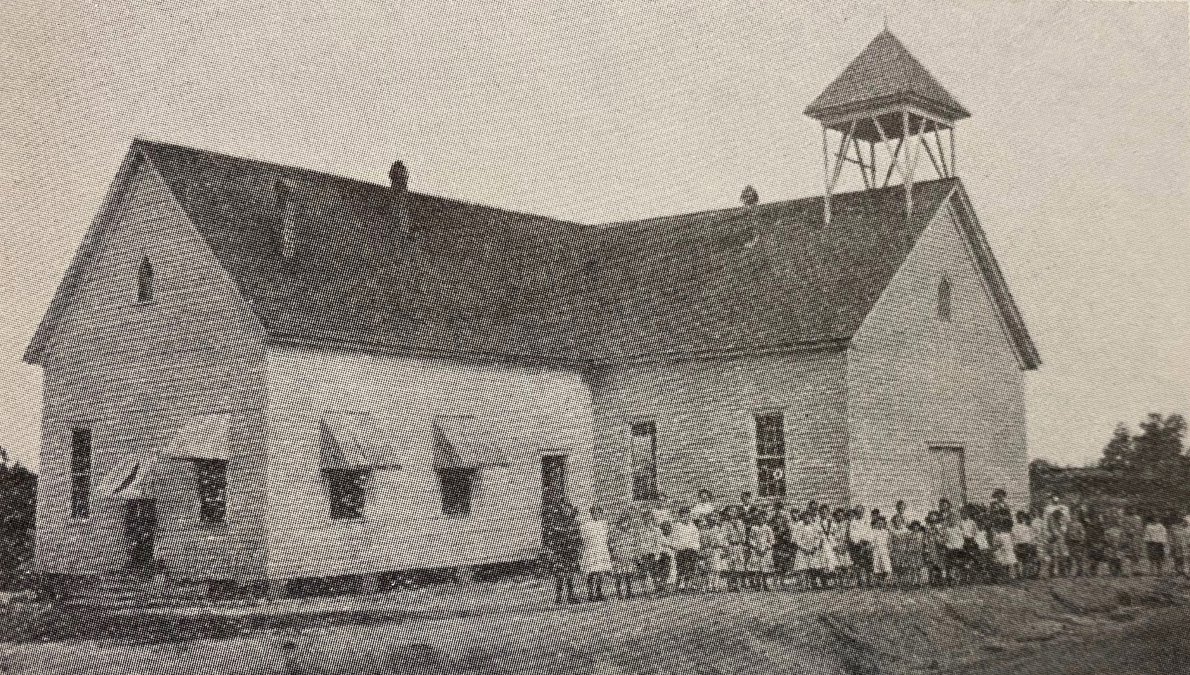COVINGTON, Ga. — Newton County Schools was established Feb. 7, 1871, but the county’s origin of public education has been traced back to years prior.
In celebrating the schools system’s 150th anniversary, The Covington News recently spent time researching the district’s beginnings with aid from the Historical Society of Newton County among others.
Before 1860, public education was not a priority.
Federal, state and local governments placed little emphasis on schooling by shelling out minor funds in the early 1800s, according to “History of Newton County Georgia,” a book compiled and released by the county’s historical society in 1988. But as the 19th century was coming to a close, local and state leaders increased their efforts to make education available on a much larger level than ever before.
In 1867, the Georgia Teachers Association was established, which would play a vital role in the creation of public education we know today. Four of its original members hailed from Newton County (Gustavus Orr, T.J. Hill, Joseph S. Stewart and Alexander Means). Another force in the creation of public education was the formation of the Freedmen’s Bureau by an act of Congress in 1865.
The object of the bureau was to protect former slaves from the development of laws that tried to limit their freedom. Between 1866 and 1870, the bureau spent nearly $5 million to pay teachers, construct and rent schools, and establish black colleges and “normal schools,” according to the historical society’s findings.
The area’s first Freedmen’s school was reported in 1866. It was located in Covington and had 25 students taught by Edward Putry. By 1867, a local Freedmen’s school was described as one with more than 100 students taught by C.A. Sprague.
In August 1870, the Freedmen’s Bureau withdrew from Georgia, which made it difficult for Black people to receive a quality education because of their systematic exclusion. Black teachers at the time were poorly trained, however, in October 1887, the legislature mandated all licensed teachers must attend all sessions of teacher institutes held in their respective counties.
Black schools in Newton County did not receive tax funding until the 1870s, according to the historical society’s findings.
Despite the adversity, there were 27 schools for Blacks across Newton County with 1,489 students enrolled by 1912. Most were held in churches and community buildings, though it is unclear if the county owned or supported any of the school buildings.
After the Civil War ended and Georgia rejoined the Union, the Newton County Schools Board of Education was formed, including charter members Henry Twiggs, Henry L. Graves, A.J. Webb, J.J. Dearing, Thomas C. Davis, J.W. Smith, L.S. Mann, E.L. Thomas, Henry Gaither, Asbury C. Mixon, T.W. Meriwether and L.M. Brown.
Dearing was elected the first board president of Newton County Schools and served in that capacity until December 1890 when he was succeeded by Harry H. Stone. Shaw was elected secretary of the board and county school commissioner.
Under Stone’s leadership, the school system established a traveling library. Several hundred books were purchased and put in boxes. Each school was allowed to keep one or two boxes for a short time. The library system was considered the first of its kind.
According to superior court records, there was an average of 1,450 students attending Newton County schools per month in 1877. By 1912, there were 26 school locations for white students in Newton County with a total of 1,890 students enrolled and 56 teachers. Schools were limited to a seven-grade system at the time.
In 1904, the district was first in the South to execute a school consolidation when four schools were combined into Heard-Mixon School, which drew national attention. The “Southern Agriculturalist” of Springfield, Massachusetts, sent a reporter to investigate and a write a feature on the consolidation. In 1907, Newton won first place in the state for school improvement. In 1912, Newton County Schools was cited by the National Education Association as one of the state’s two leading county systems.
Under the direction of George C. Adams, Newton County Schools started the Boy’s Corn Club, which was believed to be the forerunner of the National 4-H Club.
In 1947, Newton County Schools consolidated with rival school system, Covington City Schools Commission.
The Covington school system was organized in 1889. The school system took over the Georgia Methodist Female College in Covington in 1894. In 1896, the building was deemed unusable, so it was torn down and a new school called Covington Public School was built in its place. Covington Public School served as an elementary school and then a high school until 1954.
After the two school systems consolidated, the county school board agreed to furnish 22 teachers at the Covington High School. The board also agreed to sell the land for a new high school to be built on Speedway Drive — what’s known as Newton Drive today. Homer F. Sharp was elected supervising principal for the Newton County High School, which was opened for white students in 1950 and started the beginning of the county’s 12-grade program.
R.L. Cousins School and East Newton School were each built and opened for the 1955-56 school year for Black students after the consolidation of 30 Black schools, led by Cassie M. Robinson, was approved. R. L. Cousins held grades one through 12, while East Newton held grades one through eight.
Integration of schools in Newton County slowly began in 1954 after the U.S. Supreme Court case Brown vs. the Board of Education of Topeka. The court ruled racial segregation was a violation of the 14th Amendment. This led to the voluntary integration of only four school districts across Georgia out of 197 by 1964.
After the passage of the Civil Rights Act of 1964, Newton County Schools were integrated by 1970.
During the district’s integration, it was determined there would only be one high school — Newton County High School — that offered grades 10-12. R.L. Cousins High School was lowered to a junior high school, offering grades eight and nine. Leaving elementary schools with only grades 1-7. Each school had two principals — one Black and one white. Teaching staffs were also integrated.
On the first day of school, Sept. 3, 1970, Superintendent Whitlow Richardson said, “All of us are extremely pleased with the smoothness with which our transition to a unitary school system has taken place.”
In the late 1990s and early 2000s, Newton County saw a strong population increase, which led to changes.
“This was a time of tremendous student growth,” said former Superintendent Wendell Clamp, who served from 1992 to 2005. “If my memory serves me correctly, when I went to the Newton County Schools System in 1992, we had only approximately 8,000 students. Thirteen years later, in 2005, we had approximately 18,000.”
Clamp said to compensate for the increase, a plan for expansion was created.
“Now in order to accommodate that student growth, we had to have a massive building program,” he recalled. “We built 10 schools during that period. Four elementary schools, four middle schools and two high schools. And in addition, we added 130 classrooms to existing schools. We also built a service center and a (board of education) building. And I’m proud to say, and a little bit lucky too, we brought all of these buildings in on time and within budget.”
Eastside High School was opened in 1994, located on Eagle Drive in Covington, as a transitional school and later became an official high school in 1998 after its first graduating class. A new Eastside High School is being built today at 140 Georgia Hwy. 142 in Covington and is expected to open for the 2021-2022 school year.
In 2006, Alcovy High School was opened at 14567 Georgia Hwy. 36 in Covington.


Today, Newton County Schools System consists of 25 different schools, which also includes the Newton County Theme School at Ficquett, Newton College and Career Academy, Mainstay Academy and RISE Academy.
Samantha Fuhrey is Newton County’s current superintendent. She has served in the role for the last seven years. In 2020, Fuhrey was named Georgia’s Superintendent of the Year and was a finalist for the national award.
The Newton County Schools Board of Education consists of five members: Anderson Bailey, Trey Bailey, Abigail Coggin, Shakila Henderson-Baker and Eddie Johnson.
Approximately 20,000 students are enrolled across Newton schools.
Newton County Schools celebrated its 150th anniversary virtually over the past week (Feb. 1-5) by posting various videos and artwork from the community to social media.
Newton County Chairman Marcello Banes joined the celebration by stating his appreciation of the school system via a video message.
“Thank you so much for all that you do in our community,” he said. “It’s because of you that our kids are ready to face the world.
“I remember back in 1995 when I graduated from NHS,” Banes continued. “I was scared, I didn’t know what to do, but I was prepared, all because I graduated from Newton County High School.
“From the superintendent to the BOE, all the staff, thank all of you guys for being that support system that our kids so rightly need.”





